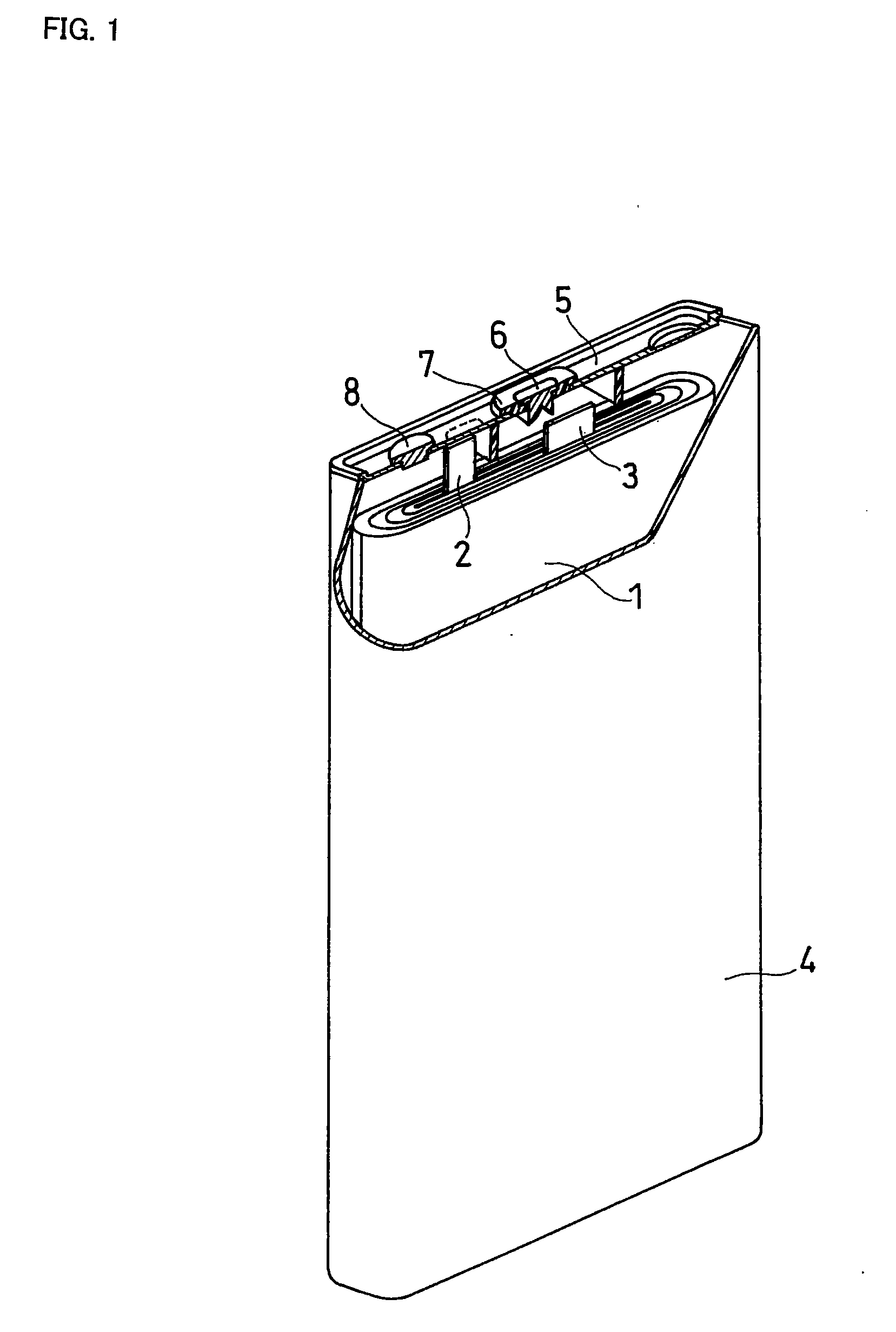Non-aqueous electrolyte secondary battery
a secondary battery, non-aqueous electrolyte technology, applied in the direction of non-aqueous electrolyte cells, cell components, electrochemical generators, etc., can solve the problems of battery overheating, lithium deposits on the surface of the negative electrode, and the thermal stability of the positive electrode is reduced, so as to improve the internal resistance of the battery and reduce the oxidation potential. , the effect of excellent safety
- Summary
- Abstract
- Description
- Claims
- Application Information
AI Technical Summary
Benefits of technology
Problems solved by technology
Method used
Image
Examples
example 2
[0129]A carbon composite (A) was prepared in the same conditions as those in Example 1 except that the particle circularity of the spherical natural graphite was changed from 0.92 to 0.91. Using the resulting carbon composite, a prismatic lithium ion secondary battery was produced in the same manner as in Example 1.
[0130]Table 1 shows the tap density, specific surface area, and mean particle size of the carbon composite measured in the above-described methods, the blend ratio of graphitic carbon substance (B) to carbon substance (C), and the heat-treatment condition. Table 1 also shows data of the following Examples and Comparative Examples.
example 3
[0131]A carbon composite (A) was prepared in the same conditions as those in Example 1 except that the particle circularity of the spherical natural graphite was changed from 0.92 to 0.85. Using the resulting carbon composite, a prismatic lithium ion secondary battery was produced in the same manner as in Example 1.
example 4
[0132]A carbon composite (A) was prepared in the same conditions as those in Example 1, except that the amount of the spherical natural graphite was changed from 95 parts by weight to 90 parts by weight, and that the amount of the non-graphitic organic material was changed from 5 parts by weight to 10 parts by weight. Using the resulting carbon composite, a prismatic lithium ion secondary battery was produced in the same manner as in Example 1.
PUM
| Property | Measurement | Unit |
|---|---|---|
| temperature | aaaaa | aaaaa |
| temperature | aaaaa | aaaaa |
| tap density | aaaaa | aaaaa |
Abstract
Description
Claims
Application Information
 Login to View More
Login to View More - R&D
- Intellectual Property
- Life Sciences
- Materials
- Tech Scout
- Unparalleled Data Quality
- Higher Quality Content
- 60% Fewer Hallucinations
Browse by: Latest US Patents, China's latest patents, Technical Efficacy Thesaurus, Application Domain, Technology Topic, Popular Technical Reports.
© 2025 PatSnap. All rights reserved.Legal|Privacy policy|Modern Slavery Act Transparency Statement|Sitemap|About US| Contact US: help@patsnap.com


